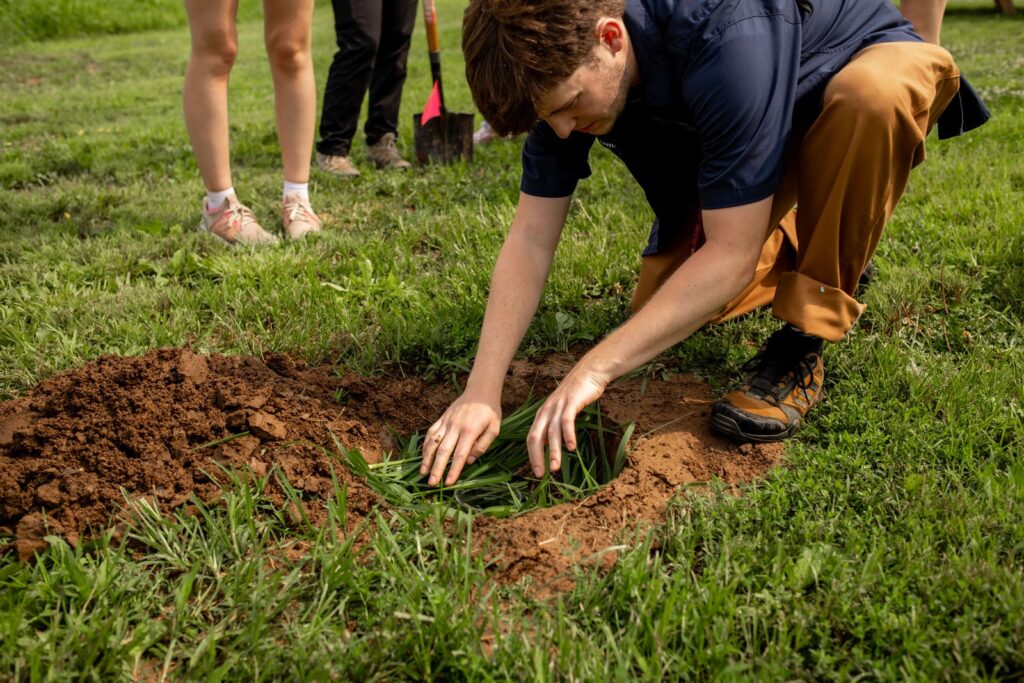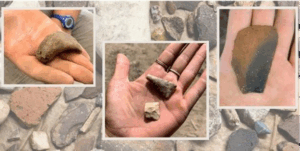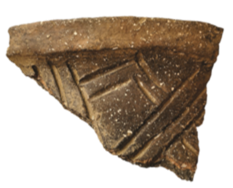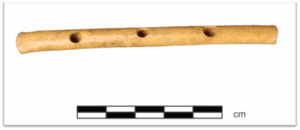Mark your calendars for our 2nd annual Pumpkin Stem event!

When you picture archaeology, what comes to mind? Maybe a gold chalice, ancient sculpture, or a long-lost city uncovered overnight.

But the real magic? It’s quieter. It happens when something small and fragile is lifted from the earth: a shard of pottery, a flint chip, a bead no bigger than your fingertip.
At first glance, these look ordinary. Broken. Forgotten. Yet in the hands of archaeologists, they become storytellers. They speak of meals cooked and shared, of families gathered around firelight, of journeys taken and communities built. Each piece, no matter how modest, helps us see the whole picture of a culture.
Hold a pottery fragment in your hand. Feel its edge—smooth from centuries underground.

Notice its color—perhaps the deep red of baked earth, or the faint trace of a stamped pattern. What looks like trash is, in fact, a clue.
Pottery reveals what people ate, how they stored food, even how far they traveled. A single shard found in Indiana might match a style made hundreds of miles away. That means trade. That means connections. That means people were moving ideas long before highways or planes ever existed.
Now imagine a flint chip. At first? Just a rock. But run your fingers along the sharp edge and you’ll feel tiny ripples—the fingerprint of ancient craftsmanship.
Creating a tool was no accident. One wrong strike, and the stone shatters. But with patience and skill, the maker produced a knife, a scraper, or the point of a spear. Every chip of stone shows us human ingenuity at its earliest stage.
Can you picture the spark of pride when a tool was finally shaped just right?
Now picture something unexpected: a whistle, carved from the hollow wing bone of a wild turkey. It fits easily in the palm of your hand. Blow across it, and suddenly a sharp, haunting sound cuts the air.
 Why does this matter? Because whistles weren’t just tools—they were instruments of meaning. They may have been used in ceremonies, signaling to others, or even for music. This small object reminds us that ancient communities valued sound, ritual, and expression just as much as survival.
Why does this matter? Because whistles weren’t just tools—they were instruments of meaning. They may have been used in ceremonies, signaling to others, or even for music. This small object reminds us that ancient communities valued sound, ritual, and expression just as much as survival.
At ARI, every artifact is carefully mapped, studied, and pieced into context. Alone, a shard of pottery is just a fragment. Together with others, it becomes a pot. A pot becomes a household. A household becomes a community.
That’s how soil turns into story.
Follow Us
University and School Partnerships
Interested in sending your students to our field school? Contact us today to learn about one of our many opportunities for student learning.
Subscribe below to get ARI updates directly in your inbox!